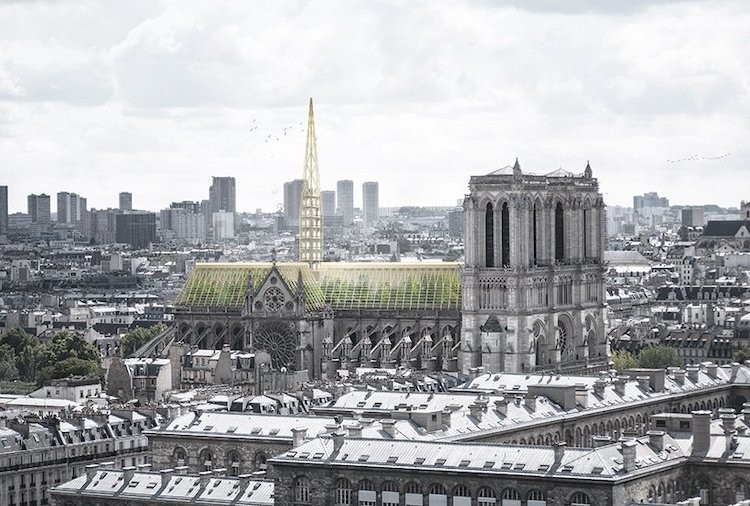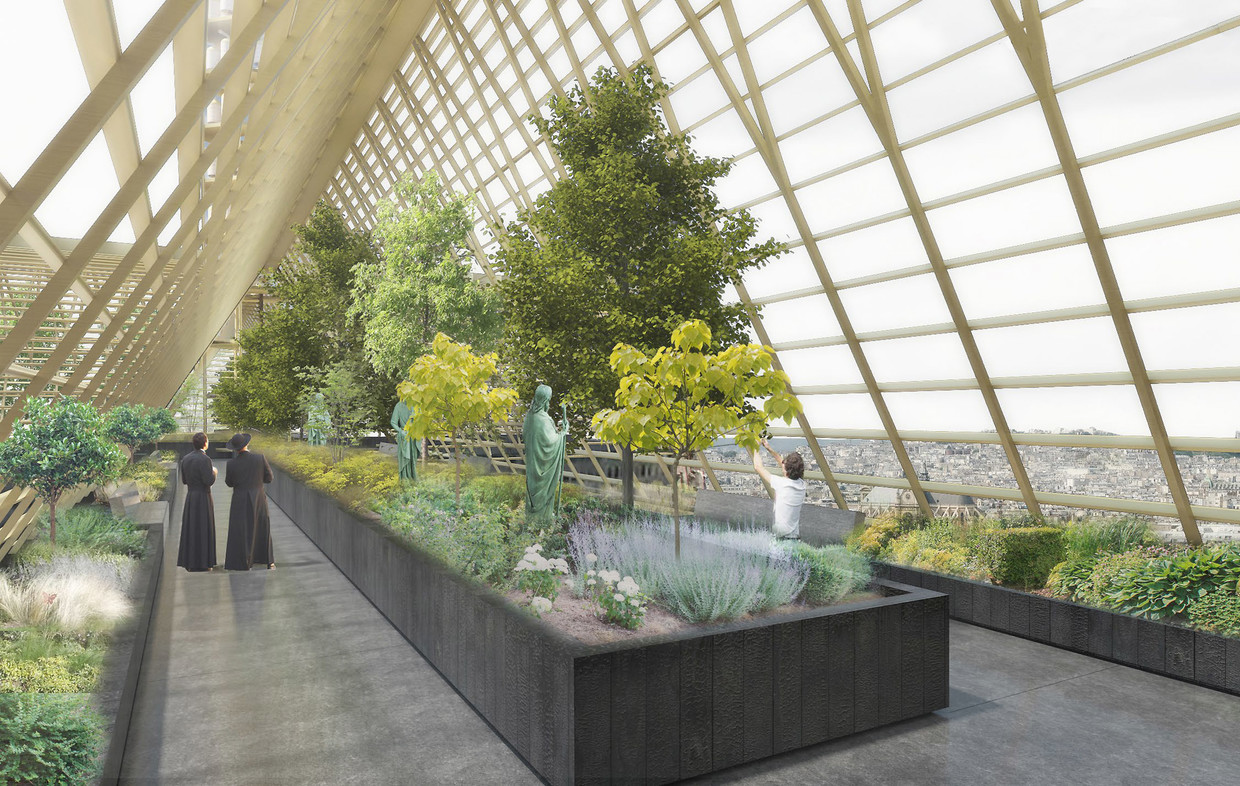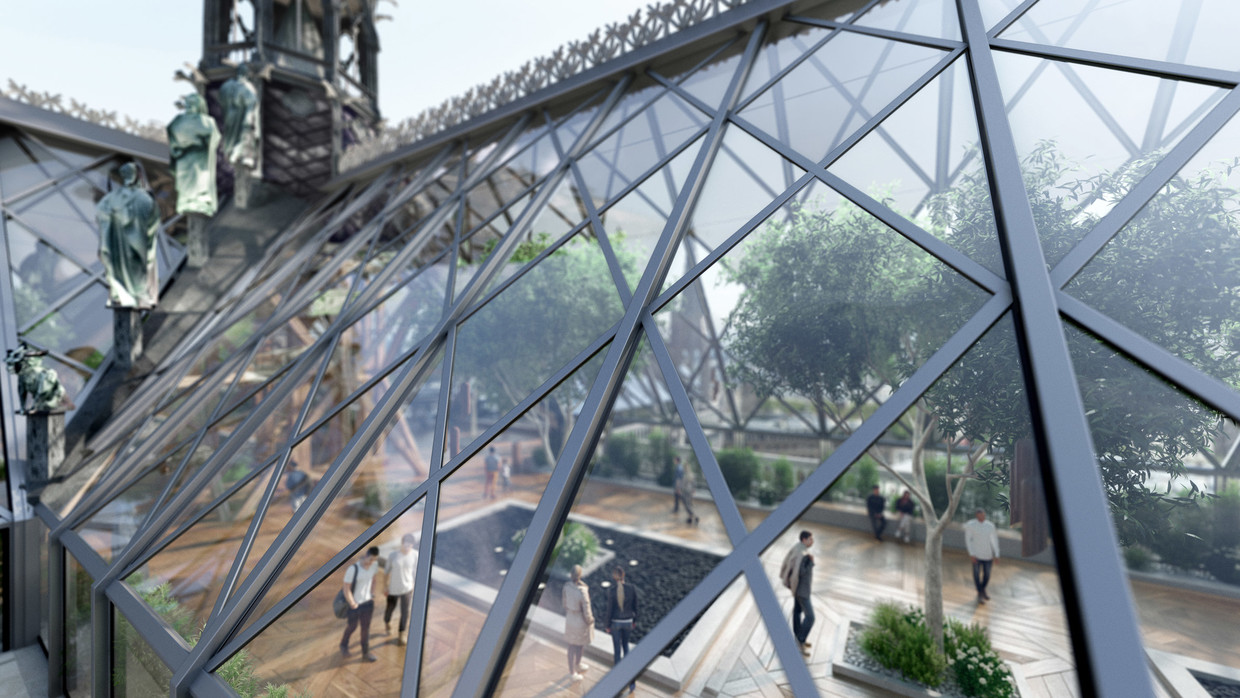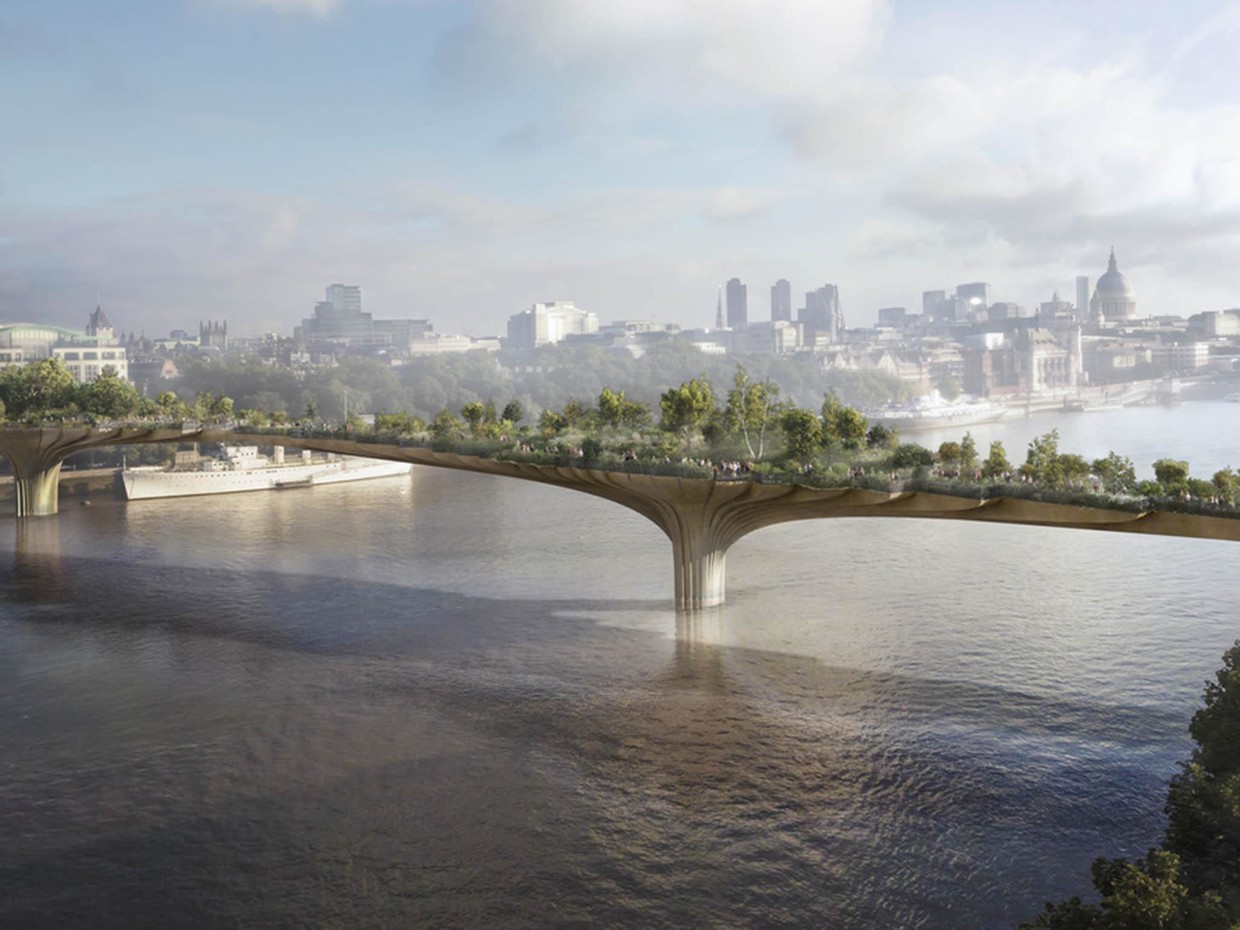
No, we don’t want Notre Dame turned into another secular solar-powered eco-garden
RT
Using the destruction of one of the prime Christian sites in the world as a chance to push your pet environmental agendas is disrespectful to Notre Dame’s heritage. Also, architects, please stop putting fake tiny parks everywhere.

Top French design bureau Vincent Callebaut Architectures has gone viral with its plans to replace the roof of the medieval cathedral with a glass shell filled with solar panels.
Underneath will be a “sustainable” farm capable of producing 21 tons of fruit and vegetables each year, to be given out for free to the homeless. Not coincidentally perhaps, this is at least the third eco-garden proposal that has been made public, while the vast majority of the submitted designs for the planned reconstruction feature a glass roof.

One can picture the unquestioning thought processes percolating through these architectural firms: how can we keep the idea of a church being a beneficial public space alive, while updating it to the present day? What could be more positive than green energy?

There is one thing: restoring Notre Dame as a cathedral space. One understands that these designers are secular in their worldview even if nominally religious, but why do they so blithely assume that they can take a building away from the Catholics who have maintained it continuously for 800 years, without even asking them, and turn it into something more to their liking? Esoteric as it may be, a cathedral has a function that is spiritual – it should facilitate communion with God – and having a vegetable patch may dilute this purpose. Environmentalism, quasi-religious as it is, does not equal bona fide Christianity.
The architects might think there is something so post-modernly clever and ingeniously practical about their designs, but in fact they are just odd: if a football stadium was damaged in a fire, in a competition to restore it you wouldn’t submit a blueprint to turn it into a shopping center or a theme park just because you don’t like football. The fans still want to watch their team somewhere.
And overused as such examples are, one would imagine if Al-Haram Mosque in Mecca, or the Angkor Wat were damaged, the same firm would think twice about even publishing their unsolicited proposals for a glass box with a visitor center and viewing platform, which has happened with at least one of the designs here. Why do you hate your own cultural history that much?

But maybe we are all thinking too narrowly. Maybe we are missing the aesthetic originality these architects are bringing into the world. But what is with the fetish for putting gardens in urban spaces? One assumes that the thinking goes: “A forest in the middle of a stone building – magical!” Though what you get instead is some thin, zoned greenery in a place where it would never naturally appear: not Eden, but an inauthentic, inorganic party trick that will cost millions to maintain (could just give that money to the homeless instead of some carrots). And as you might see from its replication in so many near-identical submissions for Paris, this isn’t even some budding idea. This is the prevailing “premium” urban aesthetic from New York’s High Line, to Boris Johnson’s never-to-be Garden Bridge, to dozens of shopping malls and restaurants in any global metropolis.

So, here is the challenge, architects: If you are interested in more than easy clicks, what if instead of suggesting overplayed and soon-to-be-dated airport terminal roofs, you think of something that TRULY captures the spirit and purpose of Notre Dame, but is NOT a shiny brand-new replica of its every architectural evolution. If you can solve that conundrum, it is not just the devout who will be thankful in their prayers.
By Igor Ogorodnev
************
Original article
Igor Ogorodnev is a Russian-British journalist, who has worked at RT since 2007 as a correspondent, editor and writer.




